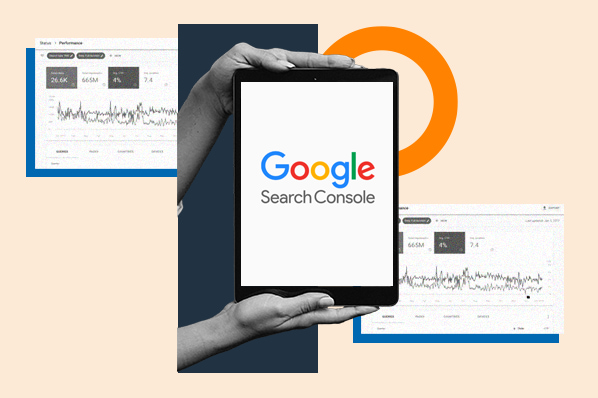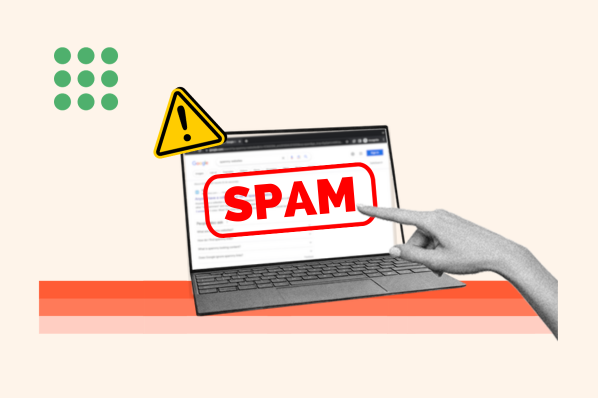If you're an SEO, I know you can relate to the following scenario.

You do thorough keyword research and create super awesome content that ends up performing well — score!
You are riding the waves of growth in SERPs and feel like you're on top of the world.
And the next day, there's an algorithm update that comes along ... and just like that, your rankings have tanked.
Regardless of whether an algorithm update rocks or destroys your world, they're an inevitable occurrence. So it's time to face the facts, and take the changes in stride.
As difficult as ranking in the coveted number one spot may seem, there is a list that'll help you get there: Google's 200 known ranking factors.
This list serves as our guide in a field that's constantly evolving.
In 2006, Google declared that it was using over 200 ranking factors. While that's certainly the most comprehensive perspective, I've pulled all the known ranking factors together in one post and shared my personal top 10 to make it a bit more tactical.
But before you jump in, understand that everything is arguable in SEO, and there have been some controversies concerning these "200 known ranking factors". SEO's often differ in their perspective on which ranking factors matter the most — or whether they're important at all.
Nevertheless, user experience is one thing Google continually improves for their users. If you want to create more helpful content for your ideal audience, it's worth referring to these ranking factors to improve both your SEO and your overall marketing strategy.
What is a ranking factor on Google?
Ranking factors are the criteria applied by Google (and other search engines) when evaluating pages to decide the best order of relevant results to return for a search query.
Understanding ranking factors is necessary for effective SEO. All marketers, content creators, and SEO strategists should be familiar with them — not because they're the end-all, be-all of SEO (they're not), but because they help create a better user experience, which ensures more leads and conversions for your business. So I would strongly recommend using these factors as a guide.
How many Google ranking factors are there?
There are over 200 ranking factors that are generally considered correct (but again, it's debatable). Since 2006, there have been thousands of algorithm updates.
With each update, SEOs test to see what's changed. So, some of these factors are proven, but others are just speculation.
All 200 (Known) Ranking Factors
I'll start with a rundown of all 200 ranking factors, then go in-depth into the top ten ranking factors that, based on my experience as an SEO consultant for B2B and B2C companies, have the most impact.
Here are the top categories:
- Domain Factors
- Page-Level Factors
- Site-Level Factors
- Backlink Factors
- User Interaction
- Special Google Algorithm Rules
- Brand Signals
- On-Site Webspam Factors
- Off-Site Webspam Factors
Domain Factors
Domain factors are all ranking factors that connect with your domain (the basic example.com version of your website), including:
- Your domain age
- Keyword in your domain
- Keyword is the first word in your domain
- Domain registration length
- Keyword in subdomain
- Domain history
- Penalized Whois owner
- Public WhoIs instead of private Whois
Page-Level Factors
Page-level factors are factors on each page that you can optimize, such as:
- Presence of the keyword in the title tag
- Having the keyword at the beginning of your title tag
- Keyword in your meta description tag
- Presence of the keyword in the H1 tag
- Keyword is frequently used in the content
- Content length
- Word count rankings
- Presence of a linked table of contents
- Keyword density
- Presence of semantically related keywords
- Semantically related keyword in meta title and description
- In-depth quality content
- Useful content
- Page loading speed via HTML
- Page loading speed tested on Chrome
- Core web vitals
- No duplicate content on the same site
- Image optimization through ALT, title, and file name
- Content recency (the newer, the better)
- Page age
- How many edits were made to the content during updates
- Historical data on page updates
- Proper use of rel=canonical
- Presence of keyword in H2 and H3 tags
- Presence of keyword in the first 100 words
- Grammar and spelling
- Originality of the page's content
- Entity match
- Number of outbound links
- Mobile useability and optimization
- Hidden content on mobile (may not be indexed)
- Page optimized for mobile
- Presence of multimedia, for example, images and videos
- Number of outbound links
- The quality of outbound links
- Theme of outbound links
- Presence of helpful supplementary content, like free tools and calculators
- Content hidden behind tabs (it may not be indexed and wouldn't show up in search snippets)
- Number of internal links pointing to the page
- Quality of the internal links
- Presence of too many broken links (could lower ranking capabilities)
- The reading level of the page
- Presence of many affiliate links
- Presence of many HTML errors
- Authority/trust-level of the domain
- Authority/trust level of the page
- PageRank
- Length of URL
- Closeness of URL to the homepage
- Presence of keyword in URL
- Opinion of human editors
- Relevance of page's category to page
- Content formatting for user-friendliness and readability
- Priority of the page in the sitemap.xml
- UX signal from pages ranking for the same keyword
- Citing references and sources
- Use of a user-friendly layout
- URL string in Google search engine results
- Internal link anchor text to the page
- Use of structured data
Site-level factors
Site-level factors go above the page level and take a look at things on the entire site. They include:
- Presence of a contact us page or appropriate amount of contact information
- Content on site provides value or new insights
- TrustRank (how close your site is to a known and trusted site in terms of linking)
- Website updates for freshness factor
- Site architecture
- Presence of a sitemap
- Long-term site downtime
- Location of server
- HTTPs / use of a valid SSL certificate
- Presence of legal pages (terms and conditions and privacy policy)
- Unique metadata
- Use of breadcrumb markup
- Site-wide mobile optimization
- Site-wide user-friendliness (usability and interactiveness)
- Bounce rate
- Domain authority
- User reviews
- Site reputation
Backlink factors
Backlink factors look at the sites that are linking to you to determine where to rank your page. Sites with better quality sites linking to them tend to be higher in rankings when they have quality content. The backlink factors are as follows:
- Age of linking domain
- Number of referring domains
- Number of links from separate c-class IPs
- Number of referring pages
- Anchor text of backlinks
- ALT tag of image links
- Number of links from .edu and .gov domains
- Trust factor of linking page
- Trust factor of linking domain
- Presence of links from competitors
- Number of links from expected sites in your industry
- Links from bad neighborhoods
- Number of links that are not from ads
- Country TLD of referring domains
- Domain authority
- Presence of some nofollow links
- Diversity of link profile
- Context of content the content of linking page
- Presence of more follow links that sponsored or UGC
- Lots of backlinks to URL with 301 redirects
- The text that appears when you hover over a link
- Link location on page
- Location of link in content
- Links from relevant domains
- Links from relevant pages
- Presence of your page's keyword in the title of the linking page
- Natural rate of growth in number of links
- Spiky and unnatural rate of growth in number of links
- Links from top resources on a certain topic or hubs
- Number of links from sites that are considered authority sites
- Linked as a source in a Wikipedia article
- Words around your backlinks
- Backlink age
- Links from real sites vs fake blogs
- Natural link profile
- Excessive reciprocal links
- Links in real content vs. UGC
- Backlinks from a page with a 301 redirect
- TrustRank of linking site
- Fewer outbound links on linking page
- Links in real content vs links in forums
- Word count of linking content
- Quality of linking content
- Sitewide links = one link
User Interaction
Google always emphasizes in their update announcements how important it is to provide an excellent user experience to website visitors. These factors measure user interaction to rank your page accordingly, including:
- Organic click through rate for exact keyword
- Organic click through rates for all ranking keywords
- Dwell time
- Bounce rate
- Measurement of how users interact on your site based on RankBrain
- Total direct traffic
- Percentage of repeat visitors
- Blocked sites
- Percentage of visitors that click on other pages on the SERP after clicking visiting your page
- Page frequently bookmarked by Chrome users
- Number of comments on page
Special Google Algorithm Rules
Some Google Algorithm rules are not directly connected to your page or domain. They include factors that look at personalizing search results for the user or better search results as a whole. Here are some of them:
- Need for diversity in the SERP
- Need for freshness in the SERP
- Browsing history of user
- Search history of user
- Succinct answers, formatting, page authority and HTTPS for featured snippets
- Geo-targeting
- Adult content or curse words (excluded from safe search results)
- High content quality standards for YMYL keywords
- Legitimate DMCA complaints
- Need for domain diversity in SERP
- Transactional searches
- Local search results
- Presence of news stories related to keyword for Top Stories box
- Search intent
- Presence of big brands with relevant content (they are often ranked higher)
- Presence of results optimized for Google Shopping
- Image results
- Branded search
- Easter eggs and April Fools' Day jokes and hoaxes from Google (this one makes me laugh)
- Spammy queries
- Spammy sites
Brand Signals
How great is your branding strategy in terms of SEO? If you haven't taken care of your brand mentions and brand all over the internet, you need to start now. Because there are some serious ranking factors related to your brand:
- Brand + keyword searches (for example, Hubspot SEO)
- Branded anchor text
- Twitter profile with followers
- Official LinkedIn page
- Facebook page with lots of likes
- Branded searches
- Known author or verified online profile
- Real social media accounts
- Top stories with brand mentions
- Brand mentions without links
- Physical location of offices
On-site Web
To rank high on search engine results, you need to ensure your site isn't spammy and doesn't look spammy - as with many things in life, looks play a role in how we're perceived. Here are some factors around that:
- Low-quality content
- Links to bad neighborhoods
- Multiple and sneaky redirects
- Flagged server IP address
- Distracting ads and popups
- Popups that are spammy and difficult to close
- Over-optimizing the site
- Gibberish content
- Use of doorway pages
- Lots of ads above the fold and not much content
- Hiding affiliate links
- Low-value content sites
- Affiliate sites
- Keyword stuffing in meta tags
- Compute generated content
- Nofollowing all outbound links
Off-site Webspam Factors
The Off-site webspam factors affect spam based on what's done outside your website that connects with your website. They include:
- Unnatural and sudden increase in backlinks
- Hacked site
- Lots of low-quality backlinks
- High percentage of links from unrelated websites
- Low-quality directory links
- Automatic links in widgets
- Links from sites with the same server IP
- Using “poison” in your anchor text
- Ignored manual actions in search console
- Selling links
- Temporary link schemes
Phew, we made it! Even though this list might seem overwhelming, I've condensed it to my top 10 to make things a bit more palatable.
Top 10 Google Ranking Factors
Before we go into my top 10 Google ranking factors, keep this in mind: everything is debatable in SEO. While several SEO experts might accept these 10 factors as their top ranking factors as well, other SEOs might disagree. But for me, these are what I've found to be most important.
I chose my top 10 based on what I've seen improves the user experience, optimizes conversion rates, signals trustworthiness, ranks well, brings in high amounts of organic monthly traffic, and promotes customer retention and loyalty. Let's dive in.
1. Content that provides valuable and unique insights.
As mentioned above, Google has always emphasized quality content. Providing content that provides value and unique insights not found on every other website can improve your ranking simply because your audience enjoys it.
To do this:
- Ensure you are the subject expert in what you are writing about or that you understand that topic in-depth according to research.
- Hire subject experts to write your content.
- Provide factual information that informs your audience about the questions that are the most important to them.
- Don't write fluff.
2. Content that covers a topic in-depth.
Want to rank on the first page? Stop writing thin content. Research has proven time and time again that content that covers all areas, whether long or short form, tends to do better in search results. Here's what to do:
- Study your competitors' content and write about what they missed.
- Cover all relevant areas and answer all questions that readers might have.
- Make the text readable by adding elements like images, a clickable table of contents, jump links, and CTAs to relevant information.
3. Organic click-through rates.
Your organic click through rate helps Google understand whether people like your content or not. If more people are clicking on your post in the SERP, Google will believe your content is more relevant to that keyword and rank you higher for it.
You need to write a convincing meta title and description to improve your organic click-through rate. Here are tips for writing the best meta title and description:
- Use power words.
- Ensure your keyword is visible in the meta title.
- Keep your meta title under 62 characters.
- Keep your meta description at about 150 characters.
- Your meta description should be helpful to readers (use it to show them how they benefit from reading your content).
Note that to get to a point where you can improve organic click through rate, you should have all other SEO factors in place for higher rankings. I mean anyways, if you are in the 100th position, most people wouldn't see your page to begin with.
4. Keywords in H1.
The H1 is an indication of what your content is about. So, include your keyword in your H1. Be careful, though; some SEOs say that using the same sentence in your H1 and meta title is an indication that you are keyword stuffing. So, you might want to spice it up a bit while still ensuring that your keyword is present. Do this in combination with all on-page optimization (meta data, URL, other headings).
5. The content's length.
Content length is one thing that several people debate about when it comes to SEO. Some believe an upward of 2000 words should be the standard. However, that shouldn't always be the case. Sure, long-form content seems to get the most backlinks, but it's crucial that you write long-form only when you need that to cover the entire topic.
It's also a best practice to check what your competitors have because that can be an indicator of quality content. If all competitors have between 2000-4000 words and you write 200 words, you will likely not rank high for that term.
6. Website domain authority.
Domain Authority (DA) is not a ranking factor despite what many say, and the simple reason is: Google didn't create it. When asked if it is a signal, John Mueller replied, “...it's a tool by Moz”.
But from my perspective, it's good to keep in mind because Moz uses particular signals to create that score (and other tools like SEMrush and Arel=" noopener" target="_blank" hrefs) that are similar to Google's ranking factors.
When more trusted sites are linking to yours and you have content that ranks well, that is an indicator that you should be trusted, which in turn increases your rankings even further - all of which plays into DA. So in a nutshell, you might want to focus on growing your DA even if Google doesn't confirm it.
7. Total number of backlinks from relevant sources.
The total number of your backlinks and referring domains are important, but only when they are from relevant sources. In February 2021, John Mueller commented about the importance of link relevance and that you can build many backlinks, but Google will ignore them if they are not relevant.
Rather than focusing on building millions of backlinks, focus on more relevant and quality backlinks.
8. Page loading speed via HTML.
Last year, Google announced that core web vitals would become a ranking signal and it's planned to launch in mid-June. Core web vitals is a part of PageSpeed, and page speed affects user experience.
If your site is too slow to load or slow to interact with, Google is more likely to reduce your rankings, especially when your competitors have fast site speed and great content.
9. Mobile usability.
User experience is key for SEO success and users are increasingly accessing your website via mobile. That's why Google sends constant mobile-friendliness notifications in Search Console when it sees that your site isn't responsive.
If you want to score points with Google and, more importantly, your users, work on your mobile usability.
10. Over-optimization.
Don't overdo it — this serves as a reminder that you must prioritize optimizing for humans, not the algorithm. When you over-optimize your pages, Google sees that you're trying too hard and might believe you are trying to game the system. If that happens, you get penalized.
Here are other important ranking factors that didn't make the top 10 cut, but you should make sure to work on as well:
- Quality of internal links pointing to page
- Site architecture
- Site usability
- Contextual links
- Outbound link quality
- Dwell time
- Branded searches
- Image alt text
That's all, folks!
You've now gotten to know the 200 known ranking factors and my preferred top 10. Use this article as a guide, not as hard rules. I'm not Google and only Google can confirm what the exact ranking factors are. Most of this data is from what I have seen from working with several websites over the years.
Remember, user experience is key, so continually optimize for your target audience, and you will be duly rewarded.
![→ Download Now: SEO Starter Pack [Free Kit]](https://no-cache.hubspot.com/cta/default/53/1d7211ac-7b1b-4405-b940-54b8acedb26e.png)

![The Top Search Engines in 2024 [Including 17 Google Alternatives]](https://www.hubspot.com/hubfs/other%20search%20engines%20header%20image%20.jpg)







